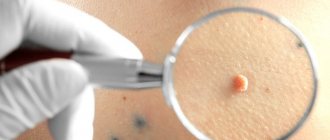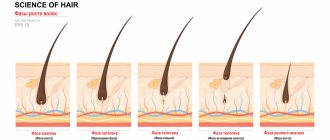What is a testicular abscess
An abscess is a limited inflammation of soft tissues, accompanied by the release and accumulation of pus. It is formed in the testicle, its epididymis, and the wall of the scrotum. It can break through to the surface in the form of a fistula - a narrow passage connecting the cavity of the abscess with the external environment.
- Acute scrotal abscess due to orchitis - https://prntscr.com/10ctgnj.
- Scrotal abscess with fistula – https://prntscr.com/10cth65.
Kinds
There are two types of scrotal abscesses based on their location:
- External. Formed in the wall of the scrotum.
- Interior. It is formed in the membranes of the testicle (pyocele), in the testicle itself (testicular), and in its epididymis.
Depending on the time of occurrence, the abscess can be primary or secondary. In the first case, it develops as an independent pathology. In the second, it is a complication of an already existing infectious process.
According to the nature of the course, a testicular abscess can be immature (acute) and chronic. In the acute form, the abscess capsule has not yet formed; it is diffuse. The process of inflammatory tissue melting continues. In the chronic form, a capsule is formed that limits the spread of pus.
Causes
The causative agents of purulent inflammation of the scrotum are most often hemolytic streptococcus, Staphylococcus aureus, coliform bacteria, Escherichia coli, and chlamydia. Less commonly, infectious agents are candida fungi, pneumococci, spirochete pallidum, and anaerobes.
Reasons for the formation of internal scrotal abscess:
- A complication of staphylococcal or streptococcal folliculitis - deep inflammation of the hair follicle.
- Trauma with hematoma formation. The accumulation of blood serves as a favorable breeding ground for bacteria. When they penetrate into the hematoma cavity, they begin to actively multiply.
- A bite of an insect.
- Infectious complication after surgery on the scrotum.
- Suppurating atheroma of the scrotum. The impetus for the development of extensive inflammation of the wen is often an unsuccessful attempt to squeeze it out.
Atheroma formation
Factors contributing to the development of external scrotal abscesses:
- Thin skin.
- High humidity.
- A large number of sebaceous glands.
- Loose subcutaneous tissue in which pathogenic microflora develops unhindered.
- Failure to maintain intimate hygiene.
Testicular pyocele develops in an already existing anatomical cavity - between the petals of the membrane. One of the ways of formation: against the background of orchitis or epididymitis, a hydrocele forms, an infection penetrates into the effusion and provokes suppuration. The abscess can expand, affecting healthy tissue.
An abscess in the body of the testicle (parenchyma) in 80% of cases forms against the background of acute orchitis, orchiepididymitis. The cause of inflammation is an infection that penetrates the testicle through the canalicular route - when urine refluxes into the vas deferens. From there, the pathogen spreads to the parenchyma, causing focal infarction and its abscess formation. Basically, suppuration occurs due to untimely consultation with a doctor, inadequate or prolonged treatment.
In rare cases, a testicular abscess develops due to an infection that penetrates through the blood - hematogenously, for example, mumps (mumps), brucellosis. Acute epididymo-orchitis may not occur.
Factors predisposing to the development of testicular abscess:
- Decreased immunity.
- Diabetes.
- Alcoholism.
- Obesity.
- Purulent diseases of the abdominal cavity: appendicitis, strangulated inguinal-scrotal hernia. The infection can spread into the cavity of the testicular membranes if the processus vaginalis, along which it descends into the scrotum, is not completely closed.
- Hydatid torsion.
Testicular abscesses can form after brachytherapy for prostate cancer or as a complication of laparoscopic removal of appendicitis.
1.General information
The testicle and its epididymis, the spermatic cord, as well as orchitis, epididymitis, funiculitis - all these terms refer only and exclusively to men. Due to the evolutionary division into two sexes and the corresponding anatomical dimorphism, functionally similar formations in women are located inside, in the abdominal cavity; they are called differently, and only their inflammations are designated according to the same principle - by adding the “inflammatory” suffix “-itis”, generally accepted in medicine.
The term “abscess” is also universal. Its features (unlike inflammation in general) are the obligatory presence of a pyogenic infectious pathogen, localization in a limited area, disintegration (purulent melting in medical terminology) of functional tissue and the formation of a high-pressure capsule filled with exudate.
The testicles, as you know, are a paired organ of the male reproductive system, hidden in a leather pouch - the scrotum, which, in turn, is located in the groin at the base of the penis. Each testicle in its rear part, mainly at the upper pole, is equipped with the so-called. epididymis, a narrow labyrinth-incubator of sperm, which, when maturing, at the right moment enter through the duct in the spermatic cord (which also serves as a mechanical “suspension” of the testicle) into the seminal storage vesicle, are saturated with the energy carrier fructose, and from there they are released into the urethra, where mixed with the secretion of the prostate gland and form the final composition of the fertilizing ejaculate, or sperm.
Sign up for a consultation
Inflammatory processes of the testicle are generalized by the term “orchitis”, of the epididymis - “epididymitis”, of both formations at the same time - orchiepididymitis. Any of these types of inflammation is dangerous in itself, and any of them can be further complicated by the formation of an abscess. In approximately every fifth case, inflammation leads to infertility; with a probability of about 65%, an atrophic process may begin in the testicular structures. In many cases, abscessation of the testicle and/or epididymis leaves no choice other than orchiectomy (surgical removal of the testicle). In other words, any signs of inflammation in these organs require immediate specialized medical care.
A must read! Help with treatment and hospitalization!
Symptoms
An immature testicular abscess is characterized by a symptom complex of acute scrotum:
- Acute pain.
- Edema.
- Redness, cyanosis of the scrotum.
- Fever.
In some cases, a purulent fistula of the scrotum opens. When infection enters the blood, symptoms of general intoxication occur: nausea, vomiting, increased sweating, dizziness.
Chronic inveterate abscess of the scrotum is manifested by dull pain. There is no swelling or redness. A man can experience periodic discomfort in the testicle for months, and nothing can be felt in it, the size does not change and there is no discharge from the urethra.
Diagnostics
Which doctor should I contact: a urologist, a surgeon.
Pus in the scrotum can be detected using high-resolution ultrasound. This is the main method for diagnosing abscesses. If necessary, high-field MRI and CT are prescribed.
An acute abscess on ultrasound looks like a heterogeneous dark formation of irregular shape, including fluid and tissue elements. The capsule is not visible. The testicle itself is enlarged or deformed. Due to edema, the tissues around the abscess have reduced echogenicity and darken.
Acute abscess of the left testicle on ultrasound: A – conventional gray scale ultrasound; B – with Doppler sonography. The blood flow bypasses the abscess around, which makes it possible to distinguish it from a tumor; C – with contrast enhancement
Abscess of the right testicle
Abscess of the epididymis
Abscess of the epididymis and scrotal wall
The same abscess. In the picture, blood flow is around the formations
Orchiepididymitis. Abscess, testicular pyocele
A chronic abscess is homogeneous in structure, surrounded by a clearly defined capsule. The surrounding tissues are no longer swollen, the vascular pattern of the testicle itself is not pronounced, its size is usually normal.
If ultrasound cannot accurately determine the nature of the formation, puncture it is performed under the control of ultrasound navigation.
Laboratory methods:
- Blood test, including culture for microflora.
- Microscopic analysis of urine.
- Urethral swab.
- Analysis for infection of discharge from a fistula or the contents of an abscess obtained by puncturing.
The diagnostic value of these methods in terms of distinguishing an abscess from other neoplasms is low. They are used as auxiliary and to determine the type of pathogen.
Treatment
There are conservative and surgical methods to treat an abscess. The choice depends on the stage of the abscess and the reason for its development.
Basic principles of treatment:
- For acute immature forms of abscess, antibiotics and anti-inflammatory drugs are prescribed. It is necessary to stop the process of spreading pus and start the formation of a capsule.
- A mature, encapsulated abscess is removed surgically - an abscessotomy is performed.
Conservative treatment is used for ulcers occupying less than a third of the body of the testicle. Therapy includes bed rest, applying cold to the scrotum, and taking antibacterial drugs. If after 1-2 weeks no reduction in formation is observed, surgical treatment is resorted to.
During surgery, the doctor tries to preserve as much functional testicular tissue as possible. This is important for a man's fertility and maintaining normal androgen levels. Gentle techniques include aspiration and drainage. The contents of the abscess are pumped out with a needle, then the cavity is washed and drainage is introduced into it. If aspiration is not possible, the abscess is drained through an open incision.
In the photo https://prntscr.com/10ctwuf there is a clinical case - drainage of a testicular abscess against the background of sepsis, which arose due to improper treatment for two months.
Operation video
Fistulas, abscess of the scrotal root - https://prntscr.com/10ctz6z.
With extensive suppuration, the testicle cannot be saved. What remains is orchiectomy - its complete removal. Used in 50% of abscess cases.
Main indications:
- Suspicion of a tumor.
- The abscess occupies more than half the size of the testicle.
- Sepsis.
The average duration of inpatient treatment is 6-7 days.
For the entire period of treatment, it is recommended to abstain from alcohol, smoking, spicy and salty foods, and coffee. You should not overuse confectionery products and sweet drinks, so as not to provoke the growth of bacteria and fungi.
It is impossible to treat a scrotal abscess with folk remedies. Compresses and other procedures may worsen the condition.
Forecast
With timely detection and proper treatment of the abscess, the prognosis is favorable. Possible complications arising from late diagnosis:
- Testicular atrophy – 40% of patients.
- Sepsis – 5.6%.
- Septic shock – 2.3%.
- Purulent fistula of the scrotum – 2%.
- Fatal outcome – 1%.
Even with a successful outcome, small compactions remain in the body of the testicle - foci of inflammatory fibrosis.
A case of recurrent testicular abscess complicated by a fistula from the site https://urologypro.ru/sprosit-u-doktora/906-u-menya-byl-abstsess-levogo-yaichka:
The doctor recommended a review of the histology of the removed testicle, culture of the discharge for Mycobacterium tuberculosis, and testing for diabetes mellitus.
Conservative therapy
Conservative treatment involves:
- coldness on the scrotum;
- detoxification (infusion of solutions) – in case of severe intoxication syndrome;
- antibiotics;
- symptomatic and anti-inflammatory therapy.
Conservative therapy alone, without surgery, is used extremely rarely. This tactic is possible only in cases where the abscess occupies less than a third of the testicular parenchyma and does not increase in size. If conservative tactics are chosen, then therapy is carried out for 7-14 days. In the absence of positive dynamics, they proceed to surgical treatment.
Prevention
Measures to prevent scrotal abscess:
- Do not squeeze out the ulcers and atheromas that have formed on the skin, but contact a dermatologist or dermatovenerologist.
- Use condoms during any sexual intercourse (how to use condoms correctly).
- Observe personal hygiene rules.
- Consult a doctor if there is discomfort in the scrotum or discharge from the urethra. Chronic inflammation of the testicles and appendages is fertile ground for the development of abscesses.
- Timely treatment of dropsy and hematomas to avoid formation of testicular pyocele.
Wearing loose cotton underwear will help avoid dermatitis of the scrotum, which often causes folliculitis, a risk factor for the appearance of an external abscess.
What is the prevention of inflammatory diseases of the scrotal organs and their complications?
To prevent the diseases described above and their complications, you should, first of all, avoid contracting sexually transmitted infections and treat them in a timely manner, not be exposed to sudden hypothermia, and protect the scrotum from injury. You should give preference to tight-fitting panties and dress warmly in winter. If you have the above-described signs of epididymitis, orchitis and orchiepididymitis, you should urgently consult a urologist!
| Hello. Six months ago, a nagging pain arose in the scrotum. I did an ultrasound and discovered a varicocele on the left, the veins were dilated to 3.9 mm and a fluid formation of the appendage on the right was 4.2 mm. I did a prostate ultrasound - dilatation of the veins of the paroprastotic plexus on the left by 3.5 mm. The pain does not go away what should I do thanks in advance Look at other questions or ask your own on the topic: Pain in the scrotum |









